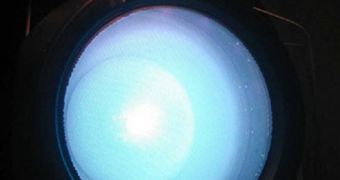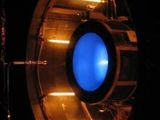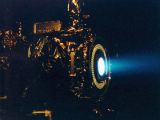A couple of decades ago, it became ominously clear to NASA engineers that they would no longer be able to sustain long-term missions in outer space using the same type of fuels they were employing at the time. Thus, the idea of ion propulsion was born. Originating more than 50 years ago, it first flew in 1998, and then again in 2007. Now, experts at the space agency's Glenn Research Center, in Cleveland, Ohio, have announced the successful completion of lab testing procedures for a new ion engine.
Deep Space 1 was the first space probe to be powered by an ion propulsion system, with the Ceres-bound Dawn mission following in 2007. Essentially, the system relies on ionizing gas inside a special chamber, utilizing power from the solar panels of the spacecraft carrying it. The ionized (electrically charged) gas is then fired at the back of the motor, which ensures a steady and very smooth push. The new design fresh out of Glenn is both lighter and more powerful than its two predecessors, which also means that it can travel faster over long distances.
The Dawn mission, for example, is headed to the dwarf planet Ceres. After it will survey this formation for a while, it will break orbit, and head for the asteroid Vesta, in the inner asteroid belt, where it will also perform scientific measurements. It is scheduled to reach its first destination in a couple of years, after having successfully made a slingshot maneuver around Mars.
Speaking about the new engine, NASA Evolutionary Xenon Thruster (NEXT) principal investigator Michael Patterson says that, “We made it physically bigger, but lighter, reduced the system's complexity to extend its lifetime, and, overall, improved its efficiency.” MIT aeronautics and astronautics department researchers add that, “You are limited in what you can bring to space because you have to carry a rocket that is mostly fuel. You have to compensate for the weight and size of the propellant tanks by building a spacecraft that is flimsy or does not have many structures to reinforce it.”
A paper describing the new engine layout and configuration has been presented at the Joint Propulsion Conference and Exhibit, which is held this week in Denver, the US. According to it, experts at Glenn would require about 36 months to complete a full ion thruster, if work starts as early as 2010. They believe that the new version will be able to provide more thrust for future spaceships, and will be able to propel them faster and farther through space, Technology Review informs.

 14 DAY TRIAL //
14 DAY TRIAL // 

